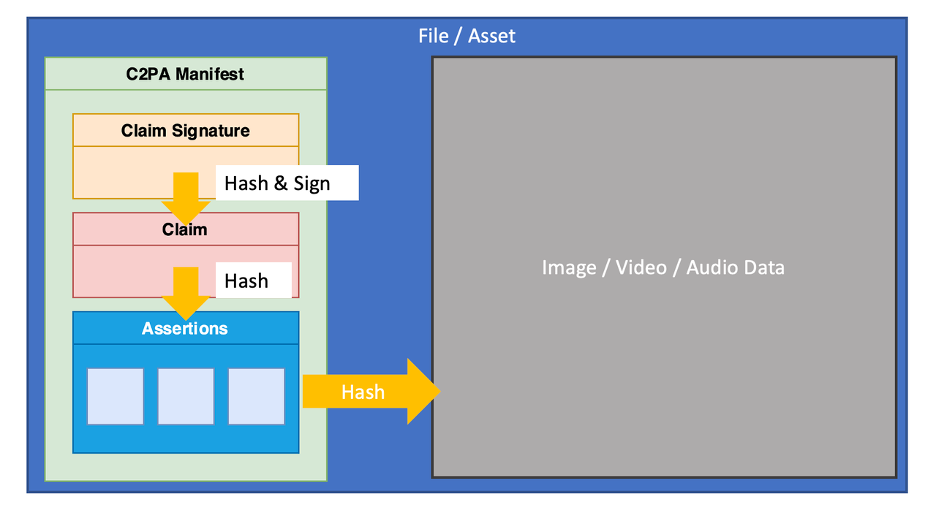What is Media Provenance?
“Provenance” in our context means not only information about proving the origin of a piece of media content, but also proving the edits and other actions that have been made to the content during its production and publishing process.
How does C2PA Media Provenance work?
C2PA uses a signed metadata approach to offer a few key things to news publishers:
- A way of proving that content comes from a publisher, where that content appears out in the wider news ecosystem. This work requires support from social media platforms.
- Showing the correct context of content in situations where someone is trying to change the context to mislead (e.g. using a video of electoral fraud from 10 years ago in a different country to “prove” that electoral fraud is happening in a current election)
- Attaching reliable and secure metadata to content add transparency (an increasing preoccupation for many news organisations) wherever content appears. This element formed the basis of a recent trial on the BBC website. Stories and media were selected that had been worked on by the BBC’s Verify team so we could expose their valuable checks to our users. As part of the trial, users were surveyed on the extra information, and so far, the response has been very positive.
- For content coming into a publisher, showing the origin and point-of-capture information like location and date/time of capture, allowing for easier and more accurate verification
- There’s also an option to label media as AI generated – a key new requirement for many publishers.
Is C2PA a watermark?
No, it is different from a “digital watermark”, which is designed to ‘hide’ information inside the visual part of image or video itself (although some watermarks are deliberately visible). Digital watermarks are very limited in the amount of data that they can insert, and so are not suitable for the rich provenance data of C2PA. Instead, C2PA data lives in the metadata part of an asset, which makes it more vulnerable to removal, but ensures the data is much more useful. C2PA data is cryptographically bound to the visual part of the content, meaning that the content cannot be manipulated or replaced without detection.

Marked content can be ‘nested’ so that the provenance of each step in the chance can be provided and interrogated.
(The IPTC thanks the BBC for writing much of this information.)